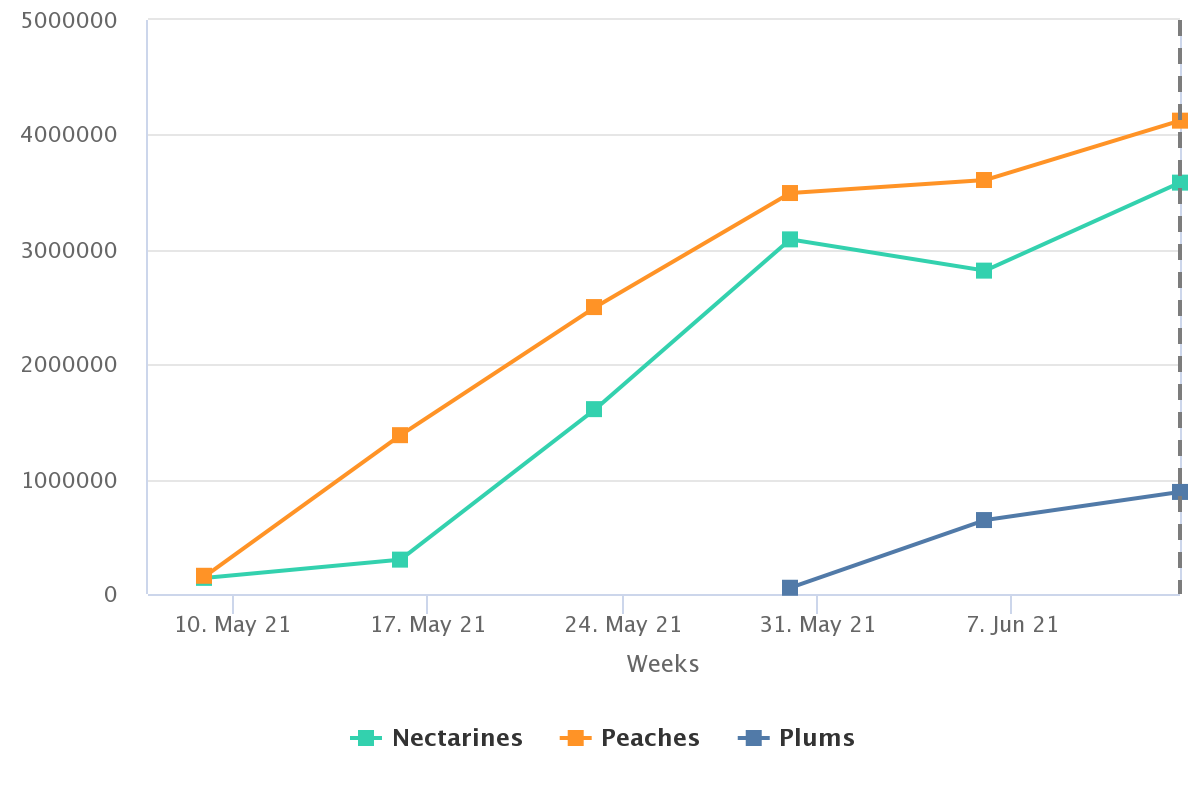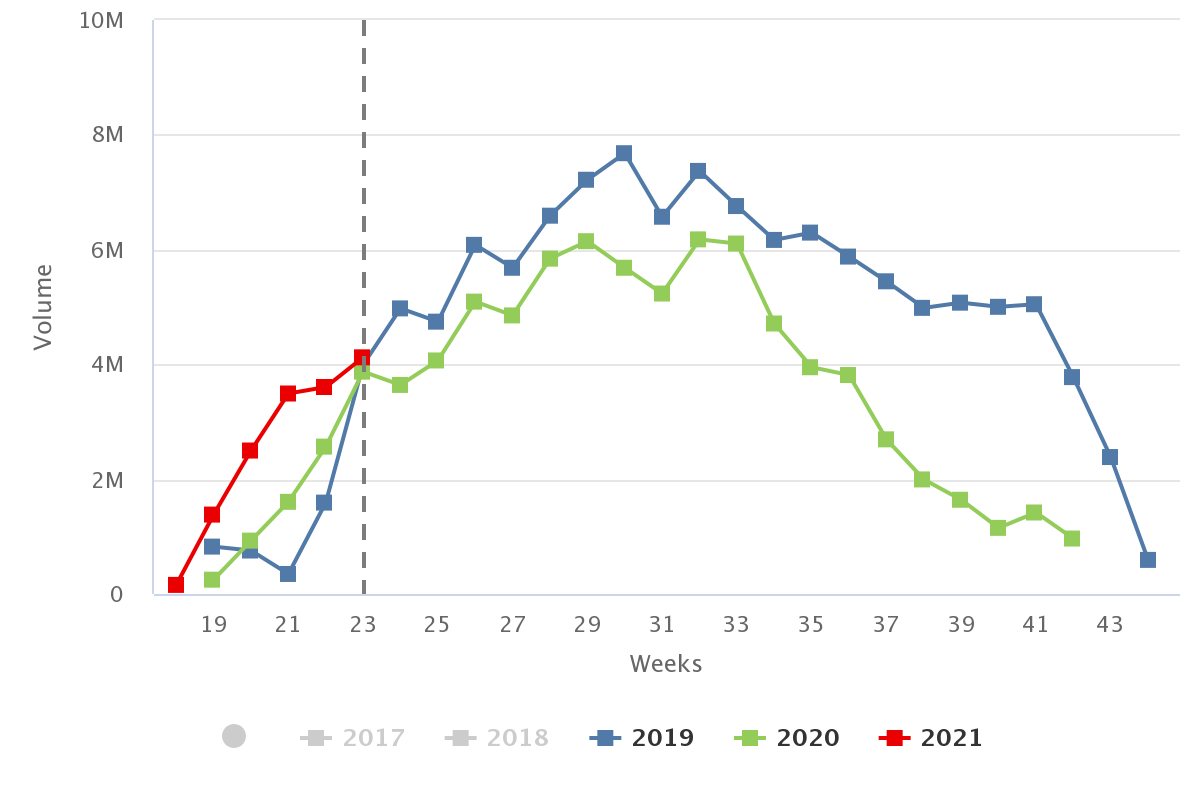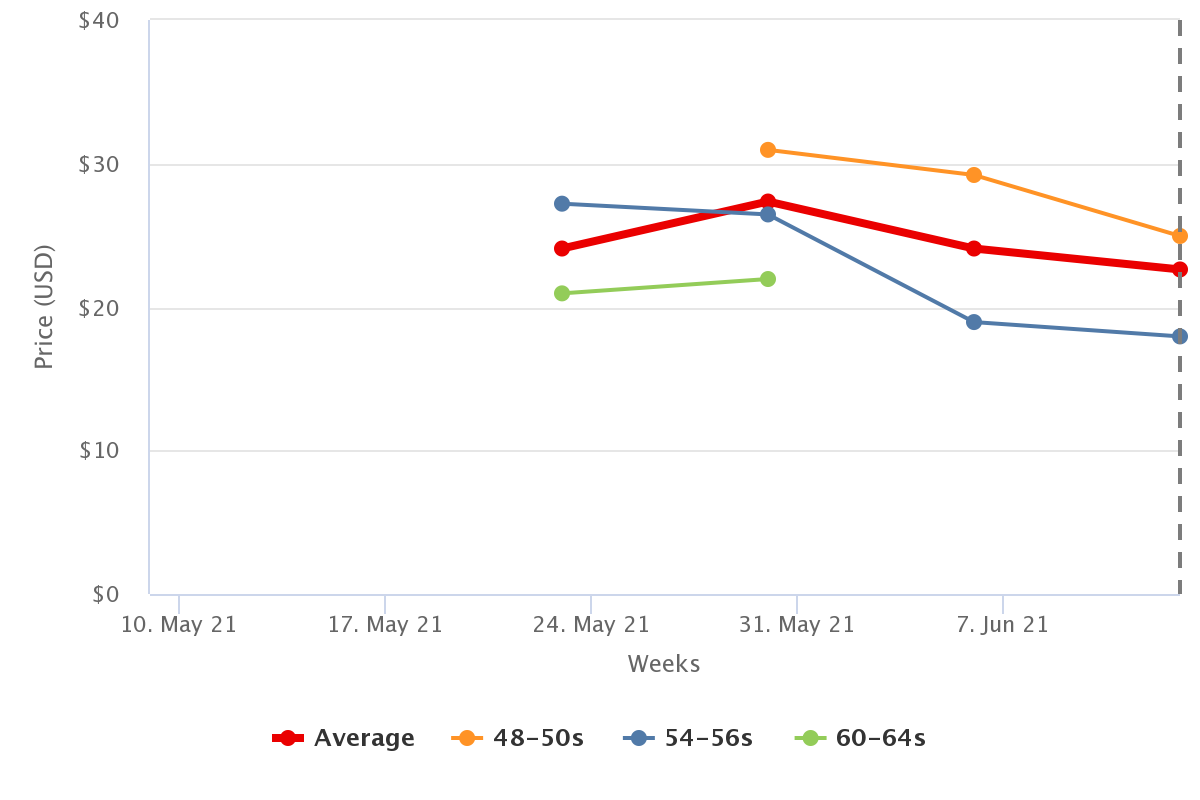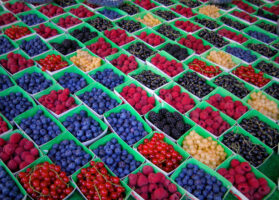Good-eating California stone fruit sees smaller sizing
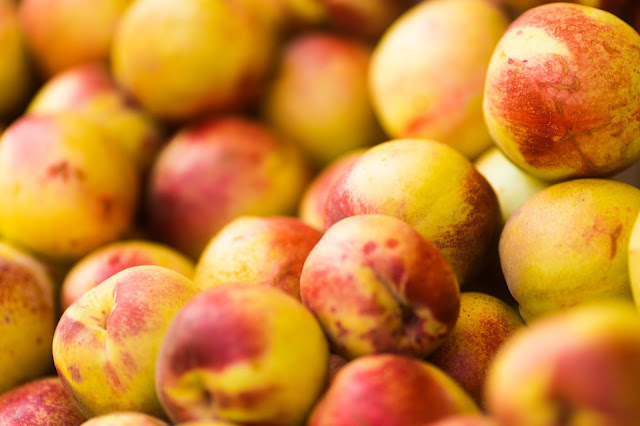
Overview of the california stone fruits season by Levon Ganajian of Trinity Fruit, complemented by charts from Agronometrics. Original published on June 17, 2021.
Source: USDA Market News via Agronometrics.
(Agronometrics users can view this chart with live updates here)
The season began in the first week of May and while weather conditions, including little rain, has set the stage for good-eating fruit. “This year we’ve probably had the least amount of rain that we’ve had in the last few years. And because of that, the sizing structure though is off by about 1/2 a size,” says Ganajian.
The overall size of the crop is similar to last year and promotional volumes are available as supplies build to peak in July. Trinity Fruit has conventional and organic varieties of peaches, white-fleshed peaches, nectarines, plums and apricots available this year.
Source: USDA Market News via Agronometrics.
(Agronometrics users can view this chart with live updates here)
Missing government food boxes
While the crop is similar in size to last year, there’s more crop to move this season. “This year we don’t have the government programs buying all that extra fruit. That cleaned up a lot of the smaller sizes last year and helped the whole program all the way through,” Ganajian says.
That said, retail demand is up somewhat this year thanks to not only good prices but good-eating fruit. “Last year we also got more involved in the bagging program–our bag business went up almost 30 percent and we’re seeing a double-digit increase again on our bagged fruit this year,” says Ganajian. Demand has also gone up for private-label fruit, particularly on bags.
Helping that movement is lower pricing this year. “The FOBs have been more of a challenge this year than last,” adds Ganajian.
Source: USDA Market News via Agronometrics.
(Agronometrics users can view this chart with live updates here)
Looking ahead, while Ganajian says while growers can contend with stone fruit and water issues this season, what lies ahead is concerning. “Most of our farms are located to the Eastern part of the valley, close to the mountains. The closer you are to the mountains, the better underground water you have and generally speaking stone fruit is closer to the mountains on the East side,” he says. “We have another couple of years and then we’re looking at some seriou
s challenges. It’s not good what’s going to happen. It’s scary if we don’t get rain in the next couple of years.”
The News in Charts is a collection of stories from the industry complemented by charts from Agronometrics to help better tell their story.
Access the original article with this (Link)



